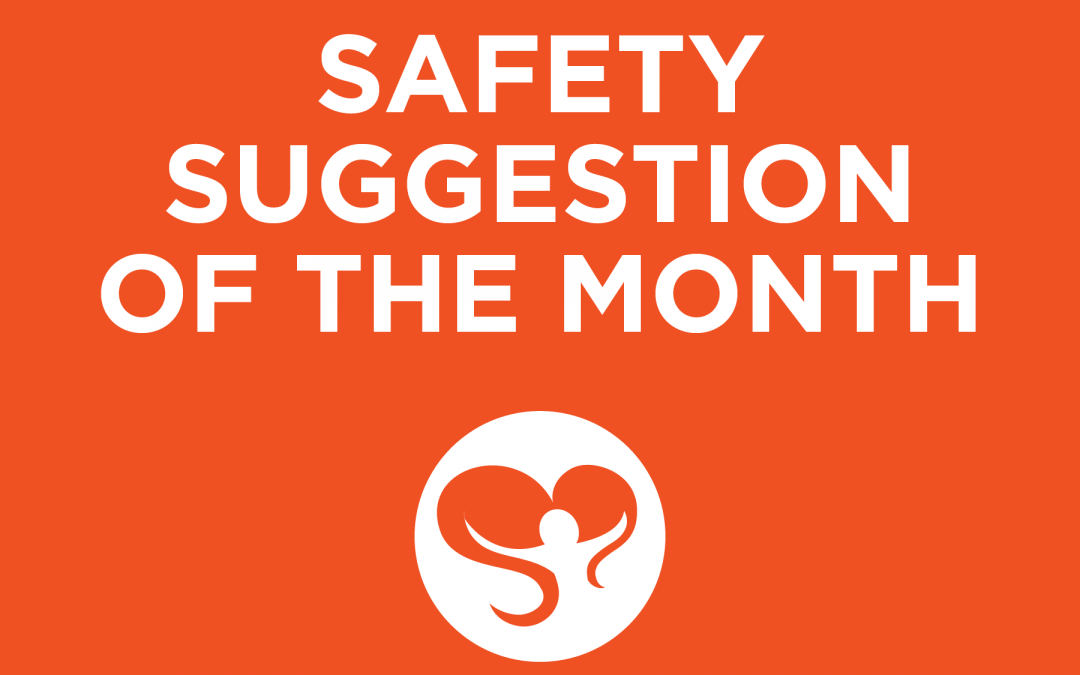Importance of working safely in warm weather
Many workers are exposed to high heat when working outdoors or in hot indoor environments. Operations involving high air temperature, radiant heat sources, high humidity, direct physical contact with hot objects, or strenuous physical activities can cause heat-related illnesses.
OSHA Statistics show that thousands of workers each year suffer illnesses from excessive occupational heat exposure. Some workers lose their lives. These injuries and deaths can be prevented by understanding how heat can be dangerous and how to reduce the risk to employees exposed to hot environments.
How can heat be a hazard to workers?
An employee working in hot conditions must rid their body of excess heat to maintain a normal internal body temperature of 98.6 °F. When faced with these conditions the body will try to cool itself by sweating. When the air temperature is warmer than your body temperature, cooling off through sweating becomes more difficult. High humidity levels also prevent the body from cooling itself because sweat will not evaporate from the skin. When a person can no longer lose heat, the internal core temperature of the body will begin to rise, causing an increase in heart rate. Prolonged exposure to heat can cause a variety of heat-related illnesses. These heat-related illnesses can result in death if not treated immediately.
What factors put workers at risk for heat illness?
Environmental Factors include:
- High temperatures.
- The “Heat Index” (takes both temperature and humidity into account).
- Direct sun exposure, no shade.
- Limited air-movement, no breeze or ventilation.
- Radiant heat.
- Working with hot objects.
Personal Factors include:
- Job-specific physical exertion.
- No tolerance to working in the heat (acclimatization).
- Certain health conditions (obesity, diabetes, pregnancy, medications).
- Use of bulky, non-breathable personal protective equipment.
What are the common types of heat illness?
Heat Rash: Skin irritation caused by sweat not being able to evaporate from the skin while working in hot/humid conditions. Symptoms include: Clusters of red bumps on the skin. Commonly appearing on the arms, neck, or chest.
First-Aid Measures: Working in a cooler, less humid environment. Keep body-parts dry where heat rash has appeared.
Heat Cramps: May be caused by the loss of vital body fluids due to sweating. Fatigued muscles are commonly affected by painful cramping during or after work. Symptoms include: Muscle spasms. Pain in overworked body parts, such as legs, arms, and abdomen.
First-Aid Measures: Rehydrate with cool water or electrolyte sport drinks. Rest in cool or shaded areas and ease back into heavy or strenuous work. Seek additional medical treatment if cramps do not subside.
Heat Exhaustion: Is a very serious heat-related illness. Heat exhaustion is the body’s response to excessive loss of water and body salts due to heavy sweating. Symptoms include: Excessive sweating, cool, moist skin, weakness, headache, elevated body temperature, rapid heartbeat, light headedness, irritability.
First-Aid Measures: Get out of the heat and sit or lie down in a cool or shaded area. Encourage frequent sips of cool water. Cool the worker with ice packs or cold compresses/towels. Have the worker wash his or her head, face, and neck with cold water. Workers should be taken to a clinic or emergency room for evaluation if the symptoms worsen.
Heat Stroke: Is the most serious heat-related illness. It occurs when the body is unable to control its internal core temperature and cannot cool itself, causing body temperature to rise to 104° or higher. Symptoms include: Confusion, altered mental status, loss of consciousness, hot/dry skin, and body temperature above 104°, excessive sweating, and seizures.
First-Aid Measures: Get medical help immediately by calling 911. Move the worker to a cool area and remove outer clothing. Cool the worker with cold water and ice if possible. Place cold wet cloths, towels or compresses on the head, neck, armpits and circulate air around the worker to help with cooling.
How do you prevent heat-related illnesses and keep workers safe when working in heat?
Employers are responsible for protecting workers from the dangers of extreme heat. OSHA recommends that any employer with workers exposed to high air temperatures establish a heat illness prevention program. Elements of a comprehensive prevention program include:
- Providing workers with cool drinking water and frequent rest breaks in shaded areas.
- Plan for heat related illness emergencies and train workers on prevention.
- Help new workers and workers who have been away for a week or more become acclimatized (gradually building exposure to working in heat). Increase workloads gradually and implement frequent rest breaks during the first week of work.
- Reduce the amount of strenuous and physically demanding work or schedule heavier work for cooler times of the day (early-morning – late afternoon).
- Implement a work/rest cycle. Breaks should be taken every hour during overly hot conditions.
- Minimize heat exposure and overexertion by rotating job functions among employees.
- Monitor workers for signs of heat illness.
- Workers should be trained about the hazards of working in heat. Topics should include the risk factors for heat illness, the common types of heat illnesses and prevention measures, acclimatization, and procedures for emergency situations.
What can workers do to work safely in the heat and prevent a heat related illness?
Workers can do a number of things to prepare themselves for working safely in hot conditions. Affected workers should be made aware of the following safe work practices:
- Drink water frequently before you are thirsty to maintain good hydration. 1 cup (8 ounces) every fifteen minutes.
- Avoid beverages containing caffeine and alcohol.
- Wear breathable, light-weight, and light-colored clothing.
- Rest in shaded, cooler areas.
- Know the signs and symptoms of heat illness and what to do in the event of an emergency.
- Workers should look out for the signs and symptoms of heat illness in their co-workers.

